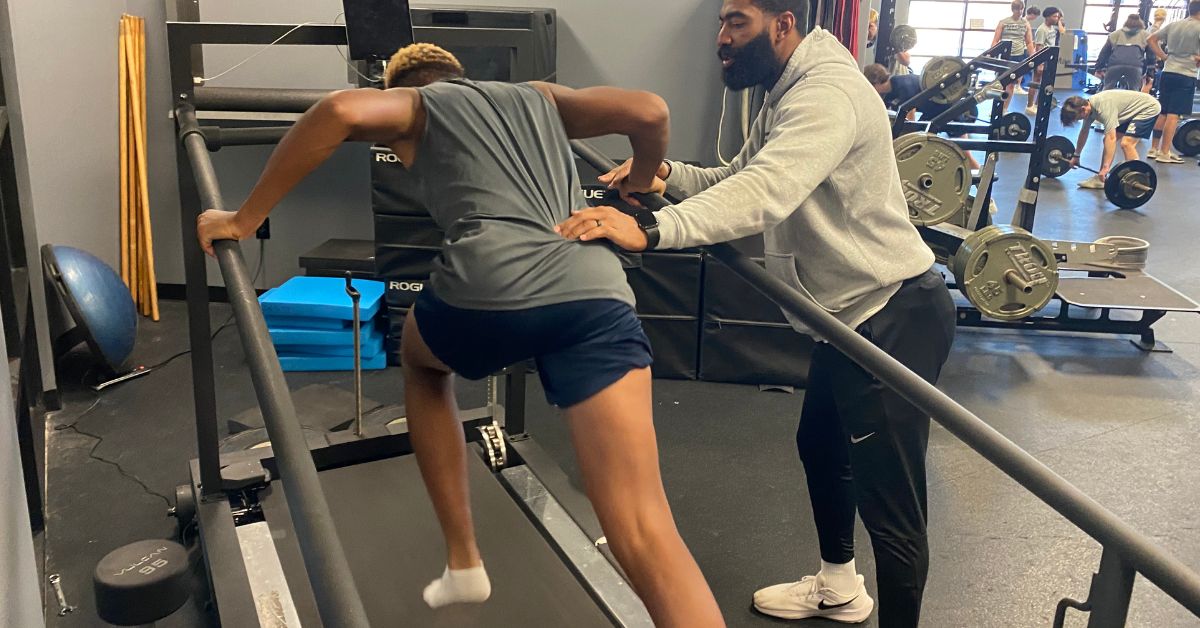Speed is the tide that lifts all boats–fast teams win a lot of games. It is also the athletic quality that seems to be most difficult for most coaches to train. Lifting weights is easy, but training speed is not.
I have been the Director of S&C at Liberty Christian School for eight years. We are a fully integrated strength program that works with 200+ athletes across 15 different sports. Our athletics program is highly competitive and has seen championships in football, baseball, women’s basketball, wrestling, and volleyball over the course of my tenure.
Three years ago, our program invested in SHREDmill, opening the door for our athletes to engage in a new level of speed training that has radically transformed our athletics department.
The real value I have seen from SHREDmill has not been with our fastest players, but with our middle-of-the pack athletes, says @DNeill62. Share on XTeach, Train, Track
Several factors limit a coach’s ability to improve speed with their athletes. The first and most challenging obstacle is teaching athletes the factors that impact their ability to run fast. Athletes cannot improve what they don’t understand. So, the first step in making your team faster is to translate what we look for in speed training to the players. This is where SHREDmill becomes a game changer.
Three years ago, our program invested in SHREDmill, opening the door for our athletes to engage in a new level of speed training that has radically transformed our athletics department, says @DNeill62. Share on XSHREDmill is an incredible tool when it comes to teaching speed qualities for two major factors:
- Athletes can see the mechanics you coach as they perform repetitions. Shin angles, body positions, and projections can be coached live as the athletes sprint. Add in a phone camera and you can easily dissect every step of a sprint.
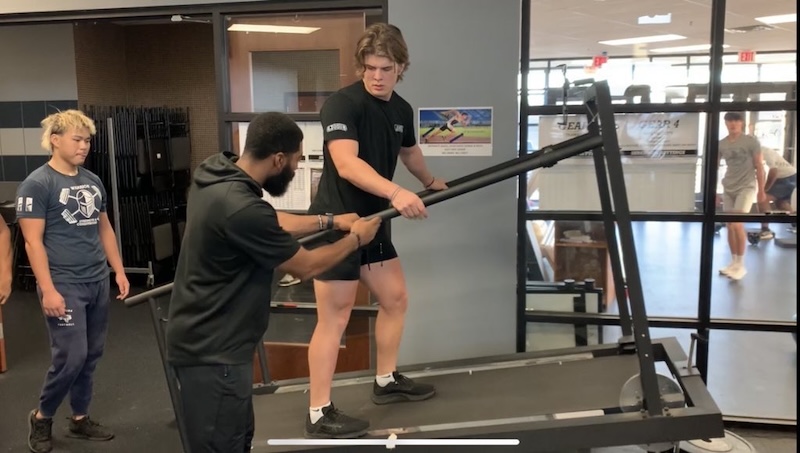
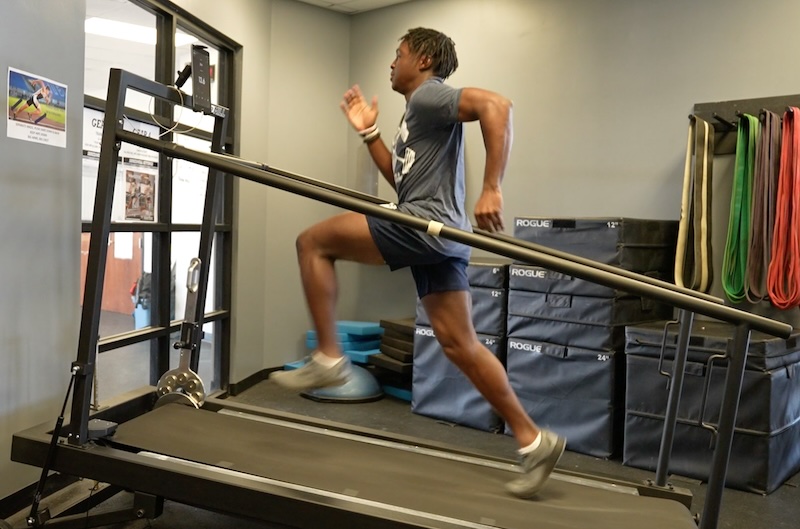
- SHREDmill’s gear system simplifies athletes’ understanding of the different phases of sprinting and how they need different mechanics and approaches to those phases. Gear 2 is all about pushing the ground away, knee separation, and producing more power. Gear 4 is vertical posture, lower body cycle mechanics, and smooth turnover. Gear 3 is the transition between the two.
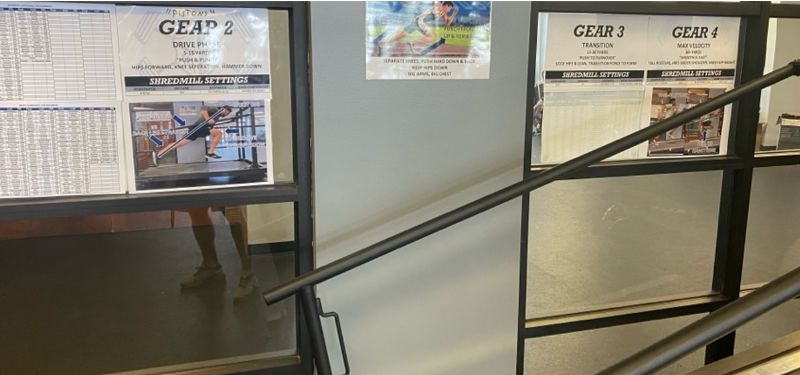
This simple categorization means athletes get a quick understanding of how to get faster, which allows their training to be intentional and effective.
The second major factor that makes training speed difficult is the time cost for implementing speed sessions. In most programs, you have to choose between a speed session and a lifting session, which leaves most coaches under-dosing mechanical and functional speed work. SHREDmill allows you to implement training stimulus in every single lifting session so athletes can train more often.
Athletes cannot improve what they don’t understand. The first step in making your team faster is to translate what we look for in speed training to the players. This is where SHREDmill becomes a game changer, says @DNeill62. Share on XFinally, SHREDmill puts numbers to your speed program so that athletes can accurately measure their improvements. Want to improve acceleration? Hit higher MPH in a shorter amount of time on Gear 2. Look at your chart, see where your steps slow down. Want to improve max velocity? Find higher MPH on Gear 4. Hold it longer. With sled sprints and band work, you never quite know if the athletes are genuinely improving or not. SHREDmill puts a number on every training session you work.
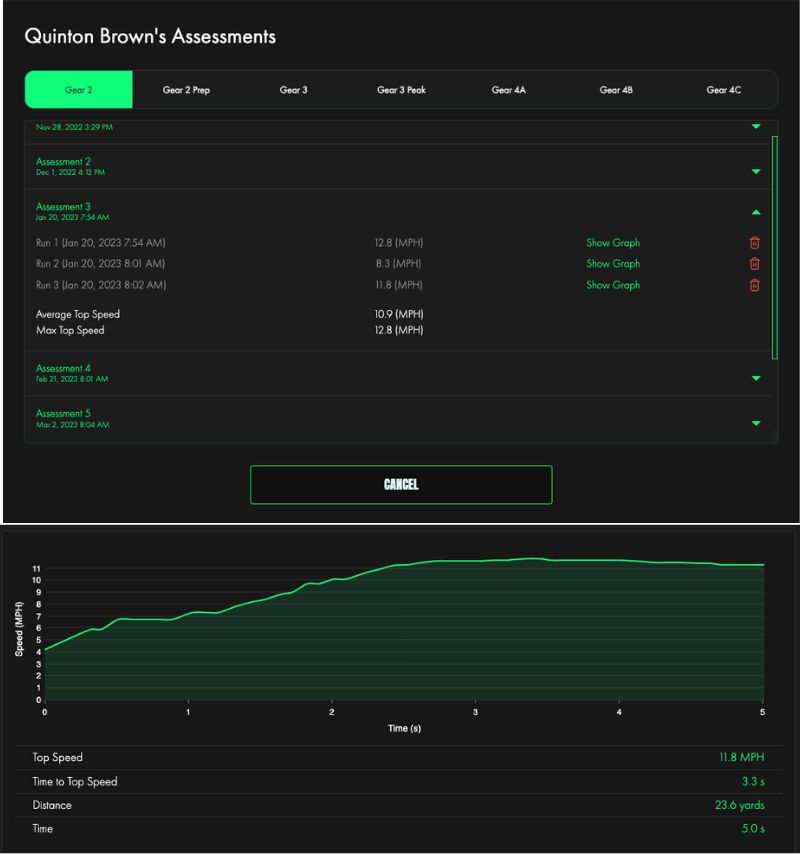
The Numbers
All of our timing data is laser timed. We use a Brower timing system with a smart start box. We started training with SHREDmill in fall of 2022. Our average 40 time across all sports prior to the 2022-2023 school year was 5.27. Our average number of athletes running a sub 5.0 40 was 29. We had an average of one sub 4.6 40 per year.
Since introducing the SHREDmill, our average 40 time has dropped to 5.20, our number of sub 5.0 40s is 49 and we have seven athletes running a sub 4.6 40 on the lasers. We also use Titan GPS units with our football team and have had the fastest Titan athlete in the nation four times this season (multiple players).
SHREDmill’s gear system simplifies athletes’ understanding of the different phases of sprinting and how they need different mechanics and approaches to those phases, says @DNeill62. Share on XThe real value I have seen from SHREDmill has not been with our fastest players, but with our middle-of-the pack athletes. I personally believe our fastest guys would still have elite speed no matter what training we do. The main difference I have seen in our program is how many “average” athletes have turned speed into a personal weapon. Before SHREDmill, we would have one to three athletes in the 21-22 mph range each year, and five to 10 in the 20 mph range. Now we see one to three guys in the 22 mph range, five to eight in the 21 mph range, and 10 to 15 running 20 mph. What used to be exceptional has now become the standard for our varsity skill positions.
Essentially, athletes who used to have the potential to run fast, but didn’t know how to use it, now have the tools to get closer to their genetic ceiling. This gives us a huge overall speed advantage across the board with our teams and the results speak for themselves.
A quick example: Our four fastest athletes ran the 4×1 last year and consistently ran between 40.3 and 40.8—Top Five in the country at one point during the season. We ran a home track meet against the other private schools in our district and our 4×1 team easily took first. The surprise, however, was who took second place: our backup 4×1 team, with a 43.16. Our 5 through 8 were able to beat most schools 1 through 4.
Put Speed Front and Center
All of this hinges around the transformation you can have when you make speed training a program priority. Before SHREDmill, our program had a low ceiling on how often and how well we could train speed qualities in athletes. Our training methods were limited, our data was limited, and due to the time cost, our training frequency was limited. What used to be “icing on the cake” has now become a centerpiece of training.
Athletes who used to have the potential to run fast, but didn’t know how to use it, now have the tools to get closer to their genetic ceiling, says @DNeill62. Share on XWe use SHREDmill during every lifting session, so our frequency of training has gone through the roof. The data our athletes see during sessions has let us quantify progress and give our athletes carrots to chase. And even our outdoor speed sessions are more effective, because the gear system has enhanced our athletes understanding of running shapes, power application direction, and limb mechanics.
I think every coach wants fast athletes. Every coach does their best to improve their team’s speed—but it can be incredibly challenging with limited resources and time. Finding a tool that has allowed us to make sprint training a central pillar in our weight room has been transformational for our guys, and I don’t plan on going back to the old ways any time soon.

